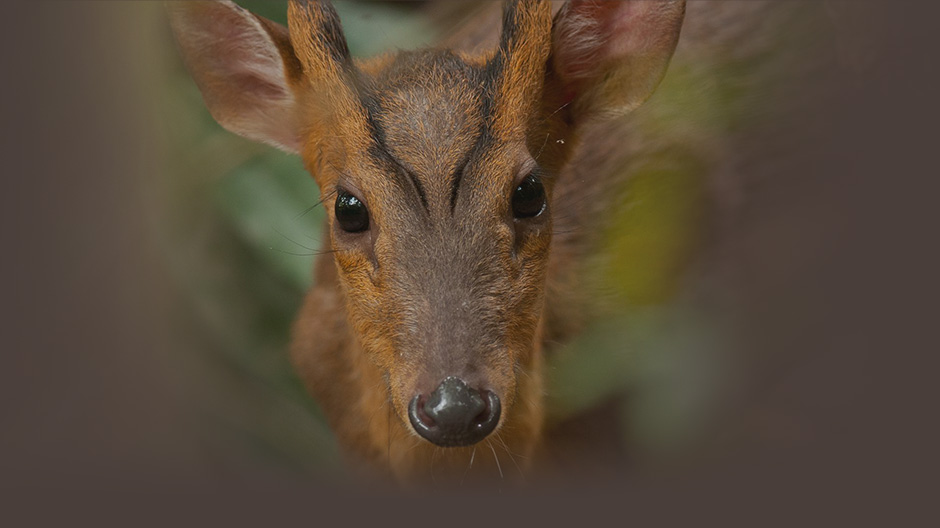駐守馬達加斯加南部,長期和雨林的多雨天氣奮戰的科學家們,終於發現大鼠狐猴的新物種。島國馬達加斯加由於長時間隔絕於其他大陸,孕育出獨特的生物多樣性。狐猴屬於靈長目下的一科,幾乎是馬達加斯加獨有的代表性動物。
過去數十年的大規模田野調查發現了不少新種狐猴,不過大鼠狐猴相對獲得較少關注,科學界對於其屬內的差異性也不甚了解。
來自德國美因茲和馬達加斯加首都塔那那利佛多所大學的研究人員,根據於南馬達加斯加進行的田野調查和實驗室分析結果,研判發現大鼠狐猴的新物種。
「我們和馬達加斯加學者合作,多年來研究大鼠狐猴的多樣性,現在總算可以辨識出此種動物的新物種。」德國美因茲大學人類學院Andreas Hapke博士說。
新種大鼠狐猴取名為Lavasoa大鼠狐猴(Cheirogaleus lavasoensis),只生活在馬達加斯加最南端的三個獨立森林地區。確切的族群大小還未知,不過初步估計只剩下不到50隻。「Lavasoa大鼠狐猴數量非常稀少,而且有滅絕的危險。」Hapke博士說。
大鼠狐猴的生活習性讓牠們非常難以被研究。牠們是夜行性動物,住在森林高聳樹木的頂端,冬季時冬眠好幾個月。牠們的主要活動季節在雨季,而這個季節科學家幾乎無法靠近牠們的棲息地。不過研究者們仍在9個地點以活體捕捉陷阱捉到51隻大鼠狐猴,取了少量的組織樣本後便把大鼠狐猴放回森林。
美因茲大學人類學院用這些組織樣本進行分子基因分析,並將獲得的數據和現有的其他研究數據做比較。「從南馬達加斯加獲得的新資料讓我們得以大幅擴充現有的資料庫。」美因茲大學人類學院研究者Dana Thiele表示。「我們用龐大的資料庫分析倭狐猴 (Microcebus)和大鼠狐猴(Cheirogaleus)這兩種非常接近的狐猴的基因差異性。比較的結果顯示,大鼠狐猴的基因差異性遠比過去所想的大。」
Hapke博士和田野調查助理Refaly Ernest 2001年在馬達加斯加進行田野調查時發現第一隻Lavasoa大鼠狐猴。當時因為基因數據太少,無法進行比較分析,因此該動物被歸類為另一支已知物種毛耳侏儒狐猴(Cheirogaleus crossleyi)。直到今天,科學界才知道Lavasoa大鼠狐猴其實自成一個物種。
本研究結果發表於當期的《分子系統學和進化》期刊。
Drenched with rain and working in the dense forests of southern Madagascar, researchers have identified a new species of dwarf lemur previously unknown to science.
The island nation of Madagascar harbors a unique biodiversity that evolved due to its long-lasting isolation from other land masses. Lemurs, a subgroup of primates, are among the most prominent representatives of the island’s unique animals. They are found almost exclusively on Madagascar.
Due to extensive field research over the past decades, numerous previously unknown lemur species have been discovered, but dwarf lemurs have received relatively little attention to date, and the diversity within this genus is still not well known.
Researchers of the universities of Mainz and Antananarivo have now identified a previously unknown species of dwarf lemur, based on fieldwork in southern Madagascar and laboratory analyses.
“Together with Malagasy scientists, we have been studying the diversity of lemurs for several years now,” said Dr. Andreas Hapke of the Institute of Anthropology at Johannes Gutenberg University Mainz, JGU.
“It is only now that we were able to determine that some of the animals examined represent a previously unknown species,” he said.
The newly described Lavasoa Dwarf Lemur,Cheirogaleus lavasoensis, inhabits only three isolated forest fragments in the extreme south of Madagascar.
The exact population size is unknown, but preliminary estimates indicate there are fewer than 50 individuals remaining.
“The Lavasoa Dwarf Lemur is thus rare and extremely endangered,” said Dr. Hapke.
The lifestyle of dwarf lemurs makes them extremely difficult to study as these nocturnal forest dwellers often remain in the upper parts of the forest canopy. They hibernate for several months during the austral winter.
Their main period of activity is the rainy season, when the forests they inhabit are virtually inaccessible to scientists. Still, the researchers were able to capture a total of 51 dwarf lemurs in live traps at nine locations for this study. They took minute tissue samples before releasing the animals back into the wild.
The tissue samples were subjected to molecular-genetic analyses at the Institute of Anthropology at Mainz University. The data generated through the process were then compared with data already published by other research groups.
“The new data from southern Madagascar enabled us to significantly enlarge existing datasets,” explained Dana Thiele of the JGU Institute of Anthropology.
“We then used extensive data analyses to examine the genetic diversity in two closely related lemur genera, the mouse lemurs (Microcebus) and the dwarf lemurs (Cheirogaleus). The comparison showed that the species diversity of dwarf lemurs is greater than previously thought,” said Thiele.
Dr. Hapke and Refaly Ernest, working as a local field assistant for the project, discovered the first Lavasoa dwarf lemurs during a field study in Madagascar in 2001.
Because few genetic data from other parts of the island were available for comparison at that time, the animals were initially assigned to an already known species, Cheirogaleus crossleyi. Only now is it possible to determine that the Lavasoa Dwarf Lemur is a distinct species of its own.
The findings of the research project are published in the current issue of the journal “Molecular Phylogenetics and Evolution.”
※ 全文及圖片詳見:ENS
 網站捷徑
網站捷徑



